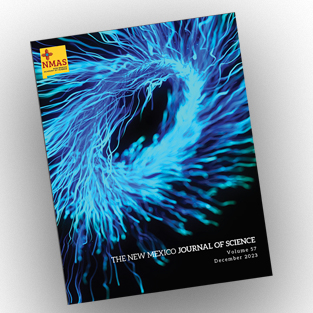NEWS
Sustainability: What is it and are we there yet?

“Sustainability” is complex and the term has many different definitions, particularly when it applies to a large National Science Foundation (NSF) project like the NM SMART Grid Center. One common definition relates to environmental sustainability and the perceived need to avoid depletion of the natural resources upon which we depend. Alternatively, with respect to a project, product, or service, many would define sustainability as the ability to maintain (or even grow) project activities, product benefits, or the level of service provided to stakeholders or customers. Such a definition is only partially correct when applied to a large, multi-faceted project like the New Mexico SMART Grid Center.
One fact that we know for certain is that the NSF will NOT continue funding the NM SMART Grid Center in its present form at the end of the 5-year project duration! But, this does not mean that the project is unsustainable. So, let's unpack the meaning of sustainability as it applies to the current NM EPSCoR Track 1 project.
The NSF EPSCoR Track 1 Program was designed and is evaluated on its ability to stimulate research competitiveness in a specific research area that is relevant to a jurisdiction like New Mexico. Competitiveness can be expressed in many ways including:
- Hiring and retaining faculty hires in strategically chosen areas that will build research capacity;
- Adding new technologies and technical capabilities that allow researchers to tackle new problems;
- Building new academic collaborations as well as partnerships among universities, National Laboratories, and business and industry that will stimulate research and innovation;
- Acquiring new funding to either continue select Track 1 activities or, importantly, to expand upon prior activities and take research into totally new and exciting directions; and
- Training undergraduate and graduate students and developing STEM programs (e.g., STEMAP+, Early Career Leadership Training, Team Science Leadership Training, New Mexico Cyberinfrastructure Training, etc.) that bolster the expertise of students, post-doctoral scholars, and junior and senior faculty.
Given NSF EPSCoR’s objective of stimulating competitiveness, we can better focus on the meaning and measurement of project sustainability using the above examples. First, 10 new strategic faculty hires have been made and their affiliated employers (UNM, NMSU, NM Tech and Santa Fe Community College) have committed to maintaining these positions well beyond the life of the project; furthermore, we can expect more hires in these areas as the economy recovers, given the fact that the State and many of our academic institutions are placing a high priority on clean energy research. Second, significant investments have been made in microgrid laboratory equipment and testbeds, all of which are likely to be sustained by faculty and their affiliated colleges and universities, as well as through industrial and governmental partnerships. Third, a quick review of the authorship of publications and proposals emanating from the SMART Grid Center indicates that many new intra- and inter-departmental, -college, -university, and -National Lab collaborations have emerged; it is almost a certainty that these successful collaborations will grow and evolve well into the future. Fourth, although the total investment by NSF in the Track 1 project is $20M over the five years, project participants have already acquired $30.3M in new funding through 20 funded projects, many of which are interdisciplinary and cross-institutional; thus, by even a strict definition of sustainability centered solely on funding, the SMART Grid Center has been a phenomenal success and we can anticipate significant additional funding in the remaining 3+ years of Center activity. Finally, dozens of undergraduate and graduate students are currently being trained and financially supported. In addition, most of the allied STEM training activities were only just initiated during the past seven months; nevertheless, they have received very positive reviews and we expect that many of the programs will be sustained by individual universities, colleges and governmental entities for the long-term.
Based on my experience, few large Center-level programs have been as successful over their first 2 years as has the NM SMART Grid Center. I think the most important and realistic way to think about project sustainability is to ask the question: “will the capabilities and enhanced competitiveness initiated and supported through EPSCoR funding disappear at the end of the project?” I am convinced that the project team has already made huge strides in not only sustaining many project activities, but also in expanding into many new and related research and educational directions. I encourage all project participants to consider what new capacity-building and capabilities have been initiated by EPSCoR and how you have been and can continue contributing to their sustenance and growth over and beyond the remaining three years of the Track 1 funding.
I thank all of you for your engagement, enthusiasm and extraordinary productivity, and I welcome your feedback! Contact me at William.Michener@gmail.com

